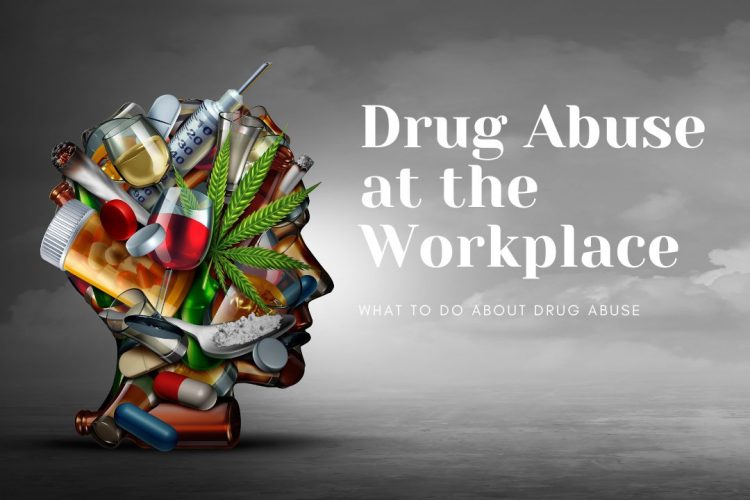According to the National Council on Alcoholism and Drug Dependence (NCADD), over 70% of Americans who use illegal drugs work; most binge drinkers do as well. Marijuana and cocaine are the most commonly abused narcotics in the workplace.
Employee alcohol and drug addiction can cause many problems for businesses and industries, including productivity loss, accidents, and a rising number of health insurance claims. Despite common misconceptions, most Americans suffering from a substance use disorder (SUD) work full-time.
Drug or alcohol addiction is occasionally regarded as a disability under the Americans with Disabilities Act (ADA), especially if the abused drug is legal, such as alcohol, or if the worker is no longer using the illicit substances.
While a worker is always accountable for fulfilling the responsibilities of their position and adhering to relevant personnel conduct standards, a worker may be permitted to request adjustments to assist them in achieving those goals.
Factors Contributing To Workplace Drug Abuse:
Several things can contribute to workplace alcohol and drug abuse. The following factors can either promote or prevent workplace substance abuse:
1. Workplace Alienation:
According to research, the type of work the employee is engaged in can contribute to high rates of worker substance misuse. Dull, unpleasant, or isolated work can all contribute to workers drinking either on or off the job.
Worker substance abuse has been associated with a lack of job freedom, job difficulty, control over the work environment and output, dullness, harassment, verbal and physical violence, and abusive behavior.
2. Workplace Culture:
The workplace culture may affect whether drinking and drug use are tolerated and promoted or is prohibited and prevented. Workplace culture is different in every business and location, to create a healthy culture that promotes employee health, safety and productivity is key to empowering employees and in turn minimizing the occurrences of substance abuse on the job. Particular careers or industries are subject to increased percentages of employee substance use and in turn abuse, and a lot of those industries are industries that are traditionally male-dominated industries, according to workplace studies, male-dominated jobs promote excessive drinking cultures in which workers drink to promote unity and cooperation but this in turn normalizes alcohol consumption either in or around the workplace and those that you work with which can act as a gateway to a larger problem for some people. As a result, these professions have increased rates of alcohol and drug abuse.
According to addiction research, workers with active substance use disorders miss 1.5 weeks more per year than workers without an addiction.
Workplace alcoholism can harm any business or organization, but research reveals that it is most prevalent in the following business sectors: food service, construction, mining, drilling, excavation, installations, maintenance, and repair.
3. Availability of Alcohol:
Worker drinking habits might be affected by the availability and accessibility of alcohol. Drinking at work and drinking, in general, is dramatically reduced in places where alcohol is prohibited. In the last year, around 1 in every 11 workers in the United States (9% of the workforce) suffered from a drug or alcohol abuse issue.
Workplace Drug Abuse Effects On The Individuals:
Drug abuse in the workplace can reduce productivity while also increasing injuries. When workers are under the influence of drugs or alcohol, the probability of a workplace accident increases significantly. Drinking in the workplace can also potentially result in harassment and violence that creates hostile working environments and injuries or lawsuits.
Other impacts of addiction and drug abuse in the workplace include:
- Job performance is affected by withdrawal symptoms
- Productivity loss while under the influence of drugs or alcohol
- Unnecessary risk-taking with negative consequences that affect the business.
- Illicit drug sales to coworkers or other illegal activities
Those who take drugs are not the only ones who suffer at work. Friends, family members, colleagues, and other stakeholders can all suffer from substance abuse in the workplace.
Workplace Drug Abuse Impact On Business:
The economic effects of drug abuse in the United States to businesses have generally been difficult to assess. Many expenses are hidden by general absence or illness, “unnoticed” lack of performance, or an inability or reluctance to properly correlate drug abuse with incident causes.
According to the National Clearinghouse for Alcohol and Drug Information, companies in the United States lose $100 billion each year because of worker alcohol and drug addiction (NCADI).
These astonishing figures do not account for the expense of diverting firm resources that may be deployed elsewhere to manage substance abuse issues. It also excludes the “suffering and pain” aspects, which cannot be quantified in monetary terms. Also, substance abuse and employee actions that harm workplace culture due to substance abuse can negatively influence productivity and employee health which is a long-term and extremely difficult figure to estimate.
Workplace Drug Abuse Warning Signs:
Numerous warning signs should prompt a referral to an Employee Assistance Program, including:
Changes In Performance:
- Absences or delays that are regular or recurring
- Lower job efficiency
- Lower productivity
- Missing deadlines
- Work that is careless or sloppy, or tasks that are incomplete
- Mood swings, aggression, and combative behavior
- Defensiveness
- Unexpected absences
- Behavior that is erratic or impulsive
- Poor decision-making
- Workplace accidents becoming more common
- Complaints from colleagues or customers
Changes In Behavior:
- Smell of alcohol
- Stumbling or lack of coordination
- Confusion or forgetfulness
- Sleeping while on duty
- Movements that are slow or excessive
- Inattentive/drowsy
- Disheveled
- Restlessness
- Slurred speech that is incoherent, low, or rambling
- Profane, too loud, or abusive language
- Glassy eyes or a blank expression
- Relationships with coworkers are tense.
Tolerance And Dependence:
While drug abuse has various adverse effects, varying from mild physical side effects like nausea and thirst to work-related problems like decreased productivity, dependence, and addiction are some of the more dangerous risks.
When a person continues to take a drug, they may reach a stage where they no longer respond to the drug as they previously did, requiring an increase in dosage to have the same effect as before.
When a person stops using a drug and develops withdrawal symptoms the person taking the substance had become dependent on the substance and their body is reacting to the lack of use. Tolerance that leads to increasing the dosage and dependence which is an aspect of withdrawal symptoms if the person tries to stop using the drug can lead to worsening employee health and safety. Both situations require support and are important for businesses or coworkers to recognize and for the business to have policies in place to facilitate employee safety.
What To Do About Drug Abuse In The Workplace:
Many businesses can participate in the NCADD’s Employee Assistance Program (EAP), a national program. Addiction patients and their loved ones can be directed to community options for emotional support and treatment through the EAP. Twelve-step groups such as Alcoholics Anonymous and Narcotics Anonymous can also help with motivation while in recovery.
1. Rehab Options:
Employed people may be hesitant to take time off work for an inpatient treatment program, but there are several options for overcoming a drug or alcohol addiction. Outpatient programs can assist in recovering while maintaining the level of routine at work.
2. Drug Detoxification and Withdrawal Management:
Full withdrawal or detoxification may be necessary before beginning a rehabilitation program. During this phase, the body adapts to its drug-free condition and eliminates the trace substances in the body.
3. Behavioral Therapy:
Several behavioral therapies are available to assist workers in treating and managing their drug or alcohol addiction. Structured cognitive-behavioral therapy (CBT) is a commonly practiced and recognized therapy. In several studies, CBT was a useful part of SUD management. CBT focuses on becoming conscious of your thoughts and behaviors.
A person can keep control and make the option not to seek out or use drugs by learning about drug misuse prevention and how to prevent things that may induce compulsions or cravings.
Other types of behavioral therapy that could be part of your treatment strategy include:
Contingency Management:
This therapy uses rewards and incentives to help convince people to stop using drugs and alcohol.
Family Counseling:
This type of counseling includes family members of the patient and emphasizes concerns that have developed due to drug abuse.
Motivational Interviewing:
This approach requires assessing a person’s willingness to start therapy and achieve positive life changes.
4. Support Groups:
Using support groups as an aftercare strategy may lessen the likelihood of relapse. Support from nonprofessional people may help patients find more motivation, support, and progress in overcoming SUDs. There are many support groups, treatments, and 12-Step programs.
An SUD can appear to be a personal battle that no one understands. As a result, SUD support groups can assist recovering patients in finding solace and advice in their peers. Depending on where a person lives, there may be a single support group for everyone recuperating from an addiction, or there may be groups, particularly for those from a specific drug.
Besides offering group support, these organizations frequently link new members with older members who have been clean for a long time. The advice of someone that is experienced in recovering from drug abuse can be quite beneficial to someone in the early stages of recovery.
What Can The Workplace Do To Help?
The workplace can be a valuable resource for addressing drug abuse problems. Employers and employees can work together to create a management of impairment policy that defines an acceptable code of behavior and policy on drug and alcohol use. The main goal is to urge businesses to adopt a method or policy that is transparent and comprehensive so that employees know where the business stands and what resources are available to them in times of need or uncertainty. So they can assist workers professionally and consistently.
Furthermore, managers and supervisors should know how to spot and manage substance abuse disorders, and they should provide workers with educational opportunities. It is important to note, that it is not the supervisor’s or employer’s responsibility to diagnose probable or possible drug abuse or dependency issues, nor is it their responsibility to accuse others of possible drug abuse symptoms or intoxication. A coworker or supervisor should check if a worker is ok and safe and then take the necessary procedures under the organization’s policy if applicable.
Supervisors and managers must have a procedure if the need arises. Workers must understand that everyone will be treated equally. These efforts contribute to the reduction of the stigma associated with drug abuse. By reducing stigma, workers will seek help without fear and speak frankly about drug abuse problems. Early diagnosis and treatment are crucial, if the workplace breeds fear regarding substance use disorders it stands to potential perpetuate the cycle of drug use and lack of treatment.
Workplaces can install a drug testing policy, to ensure that their workforce is adhering to company policies and that the company is maintaining a safe and healthy workplace for all employees.
References:
- AddictionCenter. Addiction In The Workplace. Retrieved from addictioncenter.com: https://www.addictioncenter.com/addiction/workplace/
- CCOHS. Substance Use In The Workplace. Retrieved from www.ccohs.ca: https://www.ccohs.ca/oshanswers/psychosocial/substance.html
- CDC. Alcohol And Substance Misuse. Retrieved from cdc.gov: https://www.cdc.gov/workplacehealthpromotion/tools-resources/workplace-health/alcohol-substance-misuse.html
- Hailey. Drugs And Alcohol In The Workplace. Retrieved from recovered.org: https://recovered.org/addiction/drugs-and-alcohol-in-the-workplace
- NSC. Implications Of Drug Use For Employers. Retrieved from nsc.org: https://www.nsc.org/work-safety/safety-topics/drugs-at-work/substances#:~:text=Employees%20are%20Affected,%2Ddominated%20workforces%2C%20like%20construction.
- Wendy. The Effects Of Substance Abuse In The Workplace. Retrieved from https://americanaddictioncenters.org/rehab-guide/workforce: americanaddictioncenters.org



